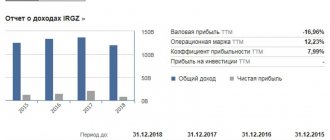Public placement is one of the most important tools contributing to the dynamic development of a company and its transition to a qualitatively new level.
At a certain stage in the life cycle of any company, there comes a point when further growth, whether entering new markets or expanding production, requires significant capital investment. As a rule, companies have to attract these investments from the external environment. One of the most promising ways to raise capital today is an initial public offering of shares on the stock market, which is known as an IPO (Initial Public Offering).
IPO (Initial Public Offering) is an initial public offering in which a company issues its shares on the stock market for the first time and they are bought by a wide range of investors.
However, there are other ways to enter the public market:
- Follow-on is the placement by a company whose shares are already traded on a stock exchange of an additional issue of shares on the open market.
- SPO (Secondary Public Offering) – placement of the main issue of shares (a large block of existing shareholders) among a wide range of investors.
- DPO (Direct Public Offering) - the issuer carries out the placement on its own, bypassing the organized market.
- PO (Private Offering) – private placement among a narrow circle of pre-selected investors with obtaining a listing on the stock exchange.
In order to unify the concepts, it is advisable to generalize these types under one term IPO, since they are united by the main thing - the distribution of shares among a wide range of investors, which occurs publicly.
Any company going public has at least two goals: transition to a new level of management by obtaining public status and attracting investment. However, the targets are certainly not limited to this.
Below are the results of a SWOT analysis of the use of public offering as a financing tool:
- Pros Raising long-term capital for company development
- Obtaining a fair assessment of business value
- The emergence of a “currency” for mergers and acquisitions
- Possibility of “exit” for key owners of the company
- Improved image, increased transparency, improved corporate governance
- Significant time and money costs for an IPO
- Growth of company capitalization and diversification of the investor base
- Decrease in capitalization if set goals are not achieved
Additional issue of shares
The very name of this process tells us about its essence. Additional, that is, being an addition to something (Explanatory Dictionary of the Russian Language by S.I. Ozhegov). In this situation, we are talking about shares that are issued in addition to existing securities.
In this way, a joint stock company, as a rule, increases its authorized capital. The goals of this procedure can be very different: to expand the number of owners, to begin the transformation of society, to carry out reforms, to attract funds from third parties, and so on.
Closed subscription
This subscription is a common option for issuing shares. It is carried out exclusively among a limited circle of people. Regulation of the Central Bank of the Russian Federation No. 428-P says that a list of these entities can be formed indicating their category or even full name. That is, anyone who wants to will never be able to become the owner of these securities. At the same time, there are two ways to carry out such a subscription: among a specifically established group of entities, where shareholders are given the exclusive right to purchase new shares, or only between the owners of “old” shares.
By the way, a non-public organization can only use a closed type of placement. In turn, a public company, along with a closed one, also has the right to use an open subscription. Permission to use a closed subscription is given by the general meeting. To do this, it is necessary that at least 3/4 of the owners of voting shares vote for it. However, the company's charter may provide for the need for a much larger number of votes. It is also worth noting that only the general meeting has the right to authorize the distribution of preferred securities by private subscription to increase the authorized capital.
The next interesting point is that internal corporate subscription is very often used as protection against raider attacks. For example, raiders create a kind of bridgehead and buy shares from disloyal owners. In response to this, the company is conducting a closed subscription of additional shares. And then the invaders are faced with a dilemma: take part in the acquisition of new securities and unplannedly spend large sums, or accept the loss of positions. And often the raiders are forced to retreat.
How to spot a problematic IPO
To identify problematic IPOs, I would pay attention to the following aspects:
- Be wary of too high profit figures in the company’s financial statements and overly positive expectations of top managers, because figures may be deliberately distorted or manipulated.
- Do not trust too much a young company without a strong history and stable performance.
- Do not trust a company that uses a fashion trend, but does not have clear and understandable answers to investor requests.
Method of payment for shares
Most often, new shares are paid for in cash. They are transferred to the legal entity’s bank account. Moreover, their cost cannot be lower than the nominal price (Decision of the Arbitration Court of St. Petersburg and Leningrad Region in case No. A56-52046/2013 dated October 16, 2013).
Further, acquirers have the right to pay for shares in machines, materials, buildings, real estate, property or other securities, as well as rights that can be valued in monetary terms. For example, quite often in industrial joint-stock companies such shares are paid for with real estate, administrative buildings, covered warehouses, workshops, workshops, means of production, and so on (Decision of the Arbitration Court of the Sakhalin Region in case No. A59-2709/2017 of September 21, 2017).
In this case, the Board of Directors is obliged to evaluate the things or rights. In addition, a professional appraiser is hired for this procedure, and the value of the property (or rights), determined by the Board of Directors, should not exceed the price recorded in the report of the appraisal company.
And finally - offset of monetary claims. It is also widely used when paying for additional issues. More precisely, the issue itself is often organized specifically to pay off debt. For example, a joint stock company has a debt to a third party. Already in court, the parties reached a settlement agreement: the debtor will increase the authorized capital and issue shares through a closed subscription. In turn, the lender will receive ownership of these shares. Next, a meeting takes place, it decides to issue papers in favor of the creditor and conclude a compensation agreement with him.
By the way, sometimes in such cases litigation occurs between the joint-stock company and some of its owners. For example, one of the shareholders does not agree with the decision of the general meeting. He sues and demands that his decision be declared illegal. In this case, the shareholder requests the application of interim measures in order to prohibit the JSC from executing the decisions of the meeting. And it's good if he wins the case. However, when the arbitration ultimately recognizes the decision of the general meeting as legal, the joint-stock company has the right to file a claim against the intractable owner and demand recovery from him of losses resulting from the freezing of the additional issue. And the court will definitely recover money from the unlucky share owner (Decision of the Arbitration Court of the Saratov Region in case No. A57-19371/2016 dated 03/09/2017).
Largest IPOs
| Company | IPO year | Quantity | taking into account inflation |
| Alibaba Group | 2014 | $25B | $26 billion |
| SoftBank Group | 2018 | $23.5B | $24 billion |
| Agricultural Bank of China | 2010 | $22.1B | $ 25000000000 |
| Industrial and Commercial Bank of China | 2006 | $21.9 billion | $ 27000000000 |
| American International Assurance | 2010 | $20.5B | $24 billion |
| Visa Inc. | 2008 | $19.7B | $ 23000000000 |
| General Motors | 2010 | $18.15B | $ 21000000000 |
| NTT DoCoMo | 1998 | $18.05B | $28 billion |
| Enel | 1999 | $16.59B | $ 25000000000 |
| 2012 | $16.01B | $17 billion |
The Saudi Arabian government is considering an IPO in Saudi Aramco and the sale of about 5% of them. IPO was predicted by Forbes
to have a price tag of $100 billion.
Increase the authorized capital
Placement decision
Before placing the next shares, you need to make sure that the constituent document contains a provision on declared ones. The latter, in their essence, are not some special type of securities. This is just an opportunity, fixed in the Charter, to place a certain number of additional shares. As well as specifying their number, the articles of incorporation may contain information about their type, value and the rights they provide.
If the constituent document does not mention such securities, then the legal entity does not have the right to issue new ones. Only shareholders at the meeting can add a phrase about declared shares to the Charter. In a similar way, the owners seem to control their Board of Directors. The latter distributes shares in a quantity not exceeding the number of declared shares specified in the Charter.
Therefore, before issuing further securities, the meeting must fix in the Charter the provision on declared shares. After state registration of these changes, you should proceed to the issue of placing securities. Such a decision can be made both by the Board of Directors (hereinafter referred to as the Board of Directors) and by the owners at a meeting. In both cases, it takes the form of a protocol. In this case, the Board of Directors (or the supervisory board) can simply initiate the issue of issuing additional shares and submit it for consideration by the owners (Minutes of the Board of Directors of PJSC Kubanenergo No. 247/2016 dated July 29, 2016), or independently make such a decision (Minutes of the Board of Directors of OJSC " FGC UES" No. 179 dated November 19, 2012).
Successful DPO Examples
One of the earliest known DPOs was in 1984. At the time, Ben Cohen and Jerry Greenfield, two entrepreneurs who needed funds for their ice cream business, advertised their ownership interests through local newspapers at $10.50 per share with a minimum of 12 shares per investor. Their loyal fan base in Vermont took advantage of the offer, and Ben & Jerry's Ice Cream raised $750,000 within a year.
Popular music streaming service Spotify (SPOT) conducted a direct public offering on April 3, 2021. Spotify has decided to underwrite its own shares through a direct listing, meaning there is no investment bank/underwriter supporting share prices by purchasing additional shares as needed. At the same time, Spotify's DPO was unique among offerings of this type: Spotify became the first directly listed company to also be listed on the New York Stock Exchange. In previous cases where companies were listed on exchanges under a DPO, there were usually other special circumstances such as previous bankruptcy filings, transfers from one exchange to another, and so on. But Spotify did not fall under any of these conditions. However, as a company that already enjoyed enormous popularity and positive cash flow before going public, Spotify was able to bypass the typical advertising and fundraising requirements associated with an IPO.
Similarly, after seeing the success of Spotify, enterprise software company Slack (NYSE: WORK) debuted on the New York Stock Exchange via a direct listing on June 20, 2021; the stock opened at $38.50, more than 48% above the reference price of $26 per share set by the NYSE.
Gaming platform Roblox and leading cryptocurrency exchange Coinbase are also planning to go public through direct listing in early 2021, planning to enter the NYSE and NASDAQ exchanges, respectively.
And that’s all about direct listing (DPO), in the next article on this topic I will also compare the main differences between IPO and DPO. I hope you found the article useful. Good luck and see you again on the pages of the Tyulyagin !
Oh yes, if you are interested in current IPOs and DPOs of companies, then especially for you on the site there is a calendar of all upcoming placements of companies on stock exchanges, both through IPO and through direct listing.
Approval and registration of the decision on additional release
It is necessary to distinguish the decision to issue shares from the decision to place shares. The latter must be made no later than 6 months after the decision on placement. The decision on the issue is approved by the Board of Directors (Minutes of the Board of Directors No. 3 of Ust-Srednekanskaya HPP OJSC dated 02/09/2011).
It is then signed by the director of the company and sealed with a seal. This document is in a standard form and can be found in Appendix 11 to the Regulations of the Central Bank of the Russian Federation No. 428-P. After the decision is made, an application for state registration is filled out. The application is accompanied by a company questionnaire, an extract from the Unified State Register of Legal Entities, copies of the minutes and charter, calculation of the value of net assets, a receipt for payment of state duty, as well as other documents listed in the Regulations of the Central Bank of the Russian Federation.
It must be remembered that the decision is drawn up in 3 copies. In addition, the applicant is obliged to scrupulously comply with all paperwork rules. If, for example, a document consists of several sheets, then it should be stitched, numbered, and also signed and stamped.
State registration of additional issue
It occurs no later than 3 months from the date of ratification of the decision to issue shares. To do this, the company again submits to the Main Directorate of the Central Bank of the Russian Federation an application in the prescribed form, a questionnaire, an extract from the Unified State Register of Legal Entities, a certificate of state registration of the organization, a decision to issue in 3 copies, copies of all protocols, constituent documents of the legal entity, a payment order for payment of the state duty, an inventory and so on. The full list of documents can be found in the regulations of the Central Bank.
State registration is carried out by the Central Bank of the Russian Federation. If there are no comments, then it sends the applicant a corresponding notice, securities prospectuses and issuance decisions with its notes.
But this is not always the case. If the issuer makes mistakes or violations during the execution of papers, then the management of the Central Bank of the Russian Federation will certainly refuse the company to register the issue. Most often, refusal occurs due to the lack of information in the decision on the procedure for payment for shares, or as a result of the provision of false information about the address of the company or the registrar of shares. In addition, applicants sometimes do not indicate a breakdown of shares by type and do not provide free access to financial information on the Internet (Decision of the Arbitration Court of the Samara Region in case No. A55-1382/2016 dated 06/06/2016).
Advantages and disadvantages of IP for a company
The initial public offering and the transformation of a joint stock company into a public one contains both positive and negative aspects; I will briefly highlight the main ones.
Advantages:
- An IPO allows you to attract additional investors for your business;
- Attracting investors is more profitable for the company in a financial sense than obtaining business loans;
- Transparent assessment of the company's value (share quotes on the stock exchange and their total value, in fact, will show the real value of the company);
- Recognition and prestige of the company (public joint stock companies have a higher rating in the eyes of investors, banks, partners, etc.).
Flaws:
- High costs of preparing for the IPO procedure;
- Preparation for an IPO of shares takes a long time;
- The need to involve an intermediary;
- Disclosure of full information about the owners and managers of the company.
Placement of shares
Having registered the additional issue, the joint-stock company can proceed directly to the sale of its shares. The distribution of new securities to existing owners occurs through entries in their accounts.
The posting itself is a normal accounting entry. Records are posted to the subjects' personal accounts. Each of them receives shares of the same type that they already own.
In the case of placement of shares through a closed subscription, the actual alienation of shares occurs between certain persons who are not the owners. It may provide for payment in money, property, rights, or even offsetting monetary claims against the JSC. For this purpose, appropriate agreements are concluded and personal accounts are opened for new owners.
Diversified Products
I would like to note that, as an alternative to individual IPOs, there are a set of companies that list on the stock exchange. A few firms that have had a stable and mature business (practically a stock market index) for 15–20 years can provide a clear advantage over young companies.
A long-known principle of a reasonable approach for an investor is not to put your eggs in one basket. I think it will be problematic to get rich from just Facebook or Apple stocks. Therefore, interest in diversified products will always be relevant.
Registering a report
The joint stock company creates and sends a report to the authorized department of the Central Bank of the Russian Federation. The period for its provision should not exceed 30 days after the end of the placement period specified in the decision to issue shares. And if the company placed them before this time, then it must send a report no later than 30 days after the distribution of the last security.
The report is not provided on its own, but as part of a set of documents. First of all, the responsible person again fills out an application in the prescribed form. Attached to it is the report itself, a copy of the protocol of the body that made the decision on the release, a certificate of compliance by the company with the requirements for disclosure of information, a receipt for payment of the state duty, as well as a list of documents.
As a rule, the report is approved by the general director. However, in some companies, approval of the report falls within the competence of the Board of Directors or even the general meeting.
Amendment of the Charter
The applicant makes appropriate amendments to the Charter of the legal entity only after completion of the distribution of new shares. This decision is made by the meeting (or the BoD, if, of course, it has such powers).
Having received the release report, the responsible person must fill out form P13001, prepare a sheet of changes, or even a new version of the Charter and have it certified by a notary. You should also pay a state fee in the amount of 800 rubles and receive a receipt.
Further, all the protocols, as well as a report on the results of the issue with the mark of the Central Bank, must be attached to the above-mentioned papers.
The applicant submits the completed package to the Federal Tax Service, which is responsible for registering legal entities and individual entrepreneurs in a constituent entity of the Russian Federation, or to the nearest MFC. If the applicant has an electronic signature, he can send documents through the State Services website.
It must be said that some business entities believe that when submitting documents to the tax office, they may not attach an emission report. In their opinion, this is against the law. But in such situations, the Federal Tax Service always refuses to representatives of the joint-stock company and does not register changes. Then the company lawyers go to court and lose the case. Arbitration, as a rule, sides with the fiscal authorities and confirms that they are right (Decision of the Arbitration Court of the Sverdlovsk Region in case No. A60-6370/2016 dated May 13, 2016). Therefore, we recommend that readers still attach this report to their application to the Federal Tax Service.
Brief conclusions
To summarize, it should be said that the procedure itself for increasing the authorized capital through additional issue of shares is set out in sufficient detail in the regulations. However, the thoroughness of the presentation does not always make the process understandable and accessible to people.
The regulations of the Central Bank of the Russian Federation and federal laws contain many nuances that are difficult to understand even for a professional. And judicial practice in such cases is quite contradictory. Therefore, we strongly recommend that shareholders do not rely on themselves and the knowledge of their (even very competent) lawyers, but entrust this process to professionals who have been working in the securities market for years.
This will allow the owners to issue securities and increase the authorized capital quickly and painlessly.
Types of emissions
Highlight:
- Initial placement among shareholders.
- Public offering for purchase to an unlimited number of people. The international term IPO (Initial Public Offering) is used.
- SPO (Secondary Public Offering). The placement of securities is public, but this is not an additional issue, but the property of shareholders (often the direct creators of the company).
- Secondary placement of an additional issue. Here they highlight:
- additional placement (Follow-on) – an additional batch is “thrown out” onto the market;
- private placement (Private Placement) for a certain circle of people.









